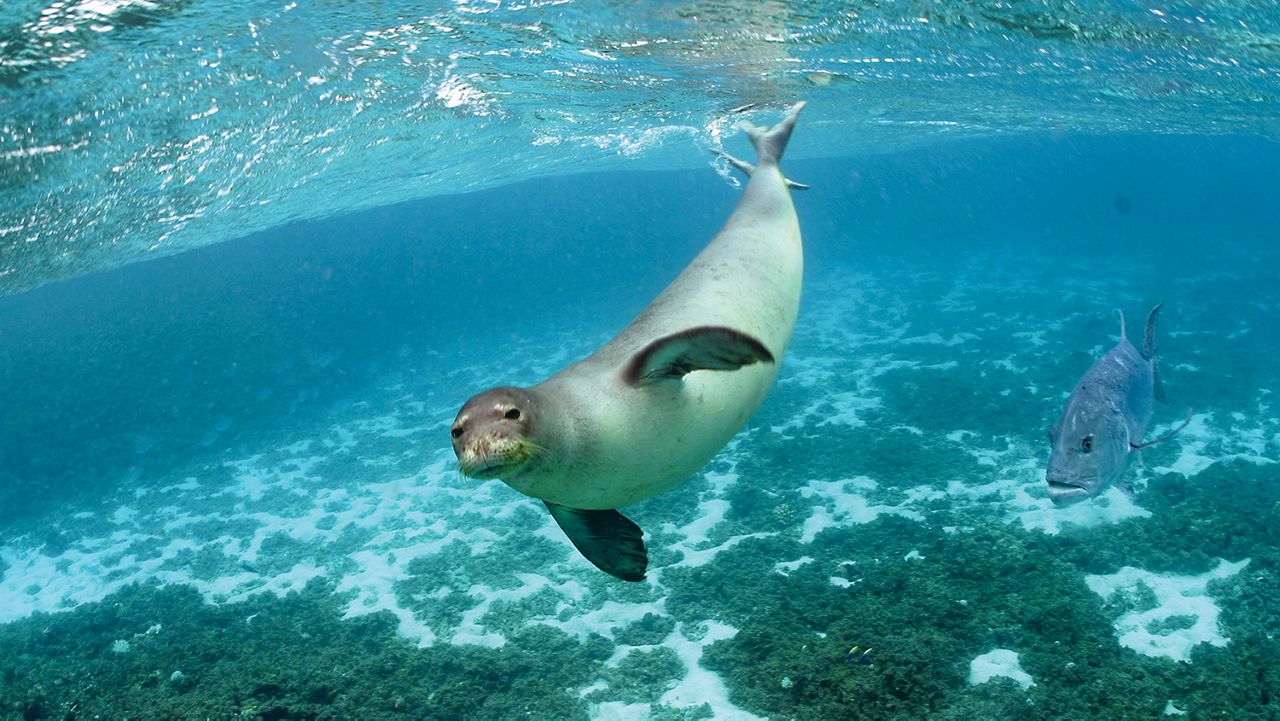HONOLULU — The National Oceanic and Atmospheric Administration announced Friday that the Office of National Marine Sanctuaries is considering designating marine portions of Papahanaumokuakea Marine National Monument as a national marine sanctuary.
The designation would fall under the National Marine Sanctuaries Act.
If it goes through, the designation will build on existing management in the marine portions of the monument by adding conservation benefits and enhanced long-term protection afforded to a national marine sanctuary. It would not include any land areas.
The designation would also allow NOAA to increase and strengthen already existing protections for the ecosystems, wildlife and the cultural and maritime heritage resources of Papahanaumokuakea.
NOAA’s Office of National Marine Sanctuaries has been a key partner and co-managing agency in the management of Papahanaumokuakea since the initial designation of the Northwestern Hawaiian Islands Coral Reef Ecosystem Reserve in 2000.
“Papahanaumokuakea’s ecosystems are increasingly under pressure from threats such as marine debris, invasive species, and climate change,” said Rick Spinrad, Ph.D., NOAA administrator. “Designation of the monument’s waters as a national marine sanctuary would complement the efforts of the four co-trustees to safeguard the monument’s natural, cultural, and historic values.”
President Clinton designated the site as the Northwestern Hawaiian Islands Coral Reef Ecosystem Reserve in 2000; President Bush designated it as a marine national monument in 2006; and the monument was expanded by President Obama in 2016.
Papahanaumokuakea Marine National Monument covers 582,578 square miles of the Pacific Ocean and is the largest contiguous fully protected conservation area in the United States. It’s home to many endangered species such as the Hawaiian monk seal and threatened green sea turtles, extensive coral reef habitat and species found nowhere else in the world. This marine ecosystem is a significant contributor to the biological diversity of the ocean.
The monument is also of great importance to the Native Hawaiian people as a place for wahi pana (places of great cultural significance and practice), as well as holding cultural and spiritual connections. There is also a variety of post-Western-contact historic resources such as those connected to the Battle of Midway and 19thcentury commercial whaling.
NOAA will open for public comment on the designation on Nov. 19, which will end Jan. 31, 2022. Public meetings will follow, a proposal will be drafted by the NOAA, then a final decision will be made. The NOAA will prepare final documents to be reviewed by the governor and members of Congress before final designation. This could take two to three years.
There are 15 national marine sanctuaries in U.S. waters with Lake Ontario in the Northeast and Great Lakes Region currently in the designation process. The Hawaiian Islands Humpback Whale National Marine Sanctuary in the waters off of Maui is the only sanctuary in the state of Hawaii.



